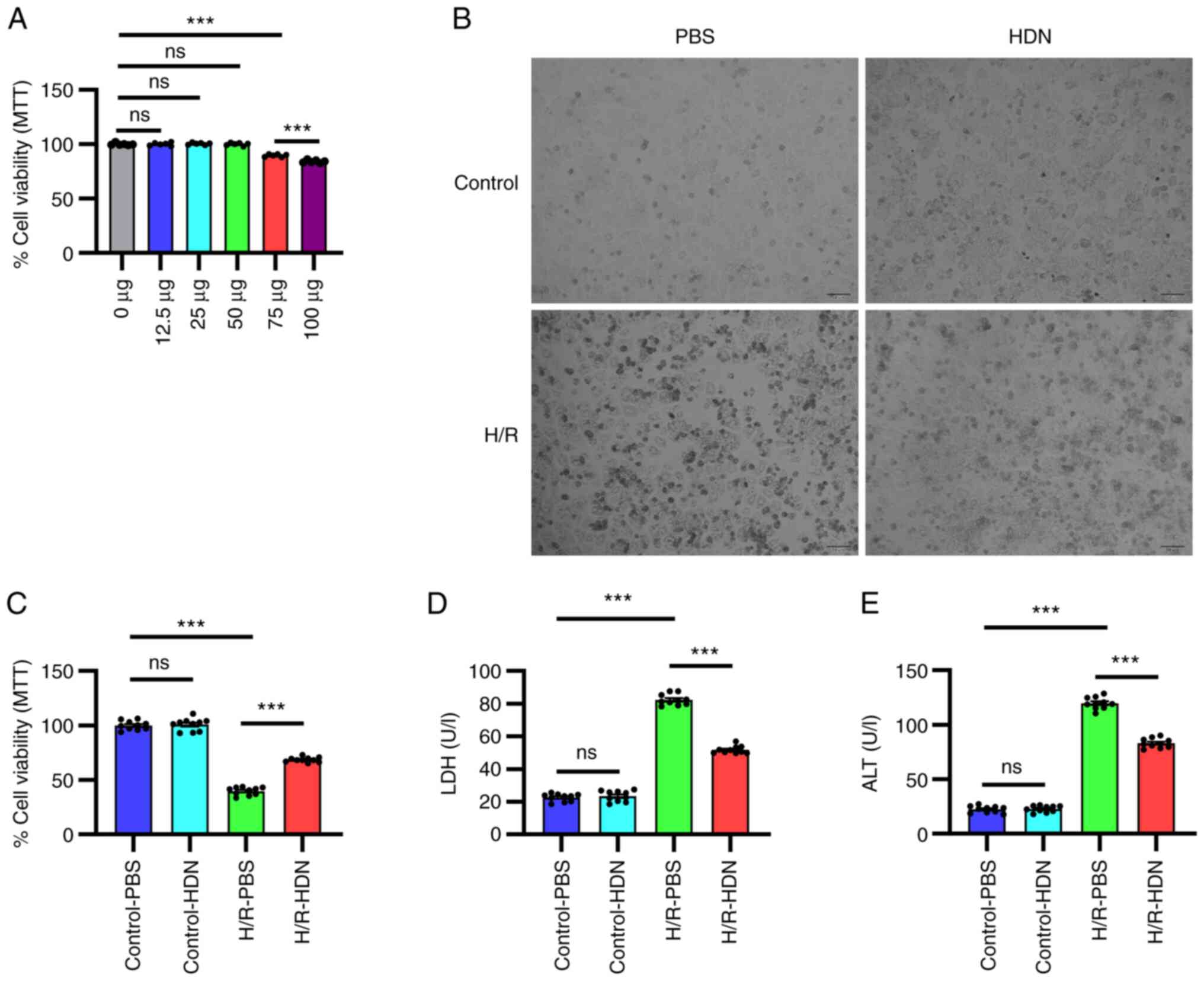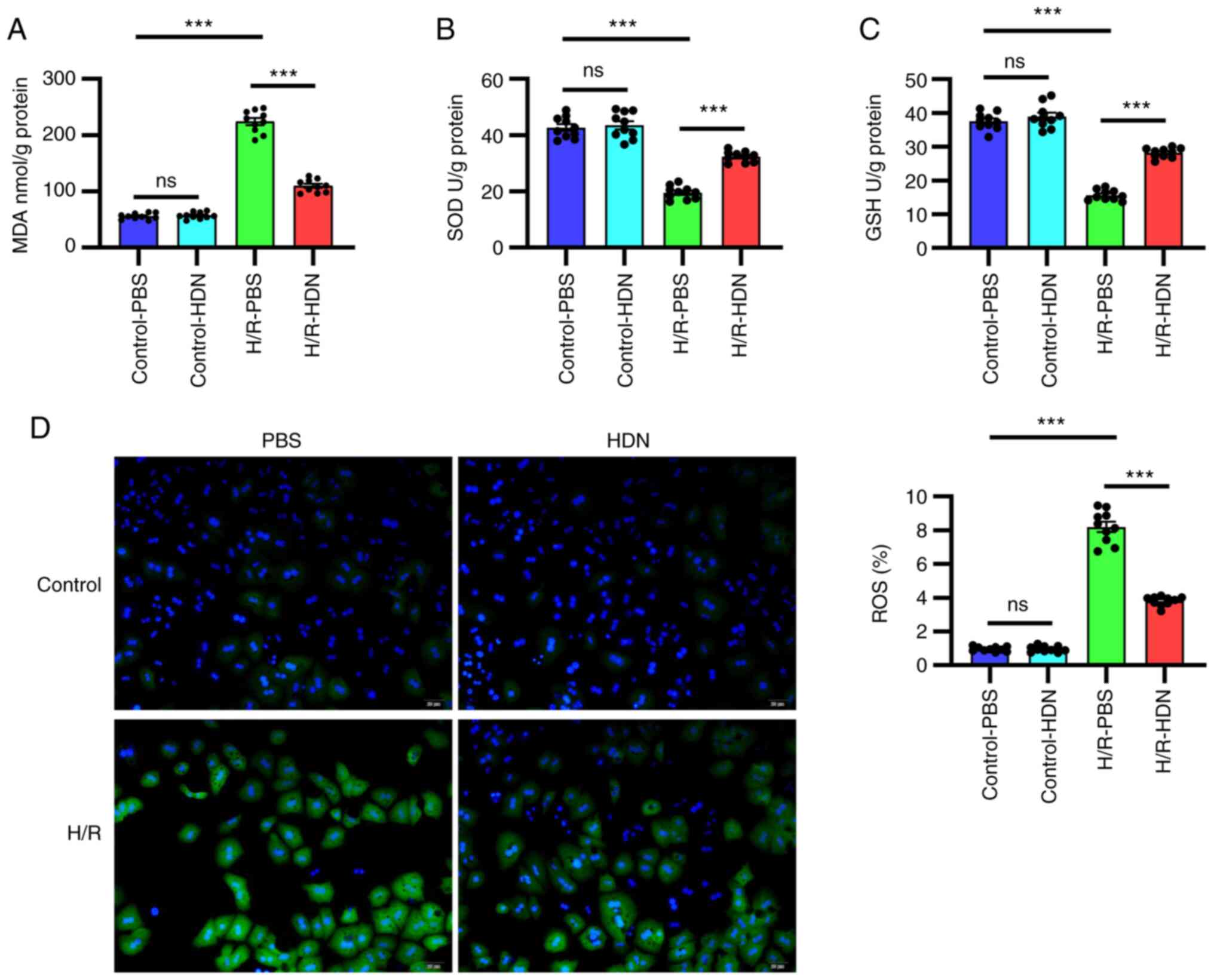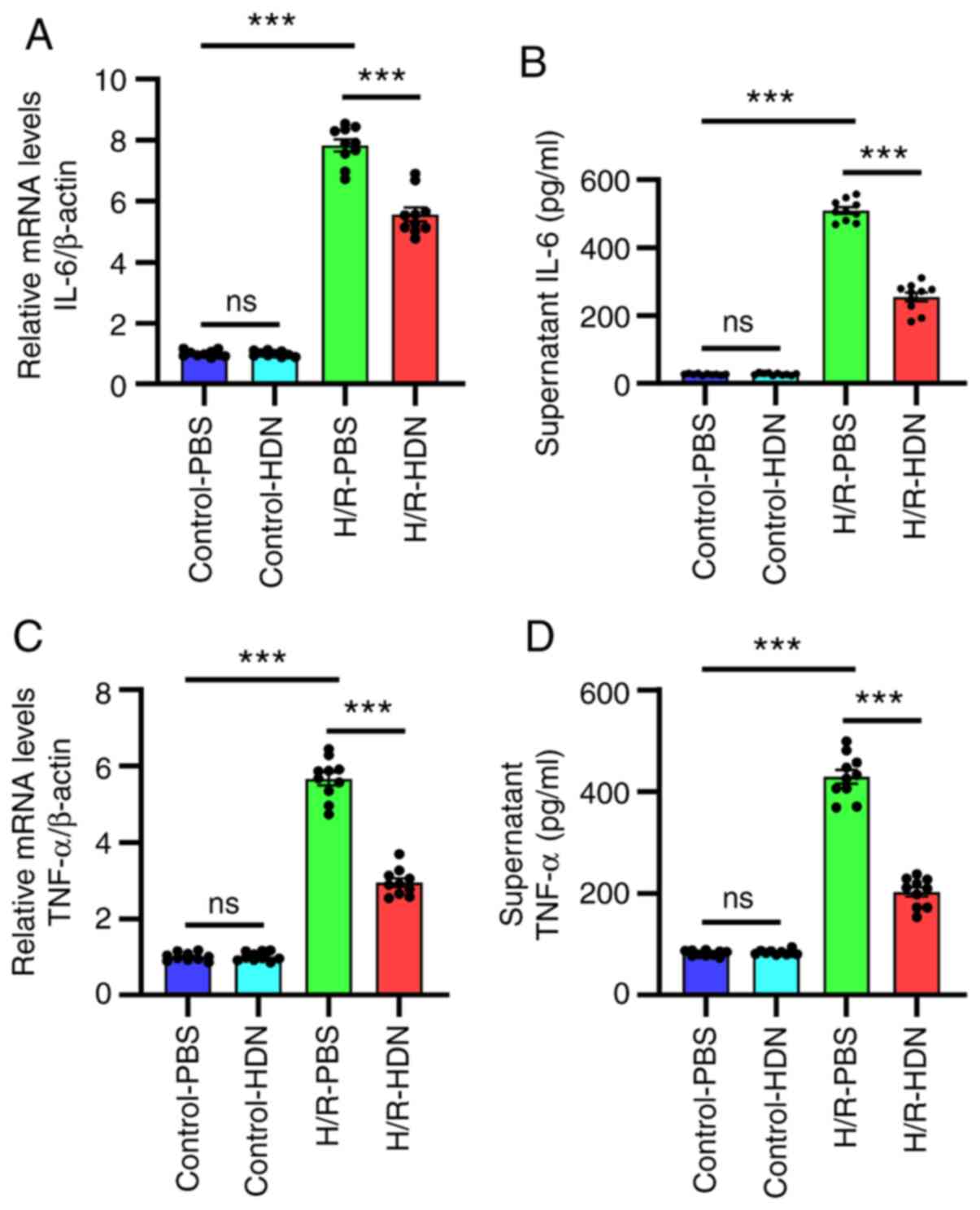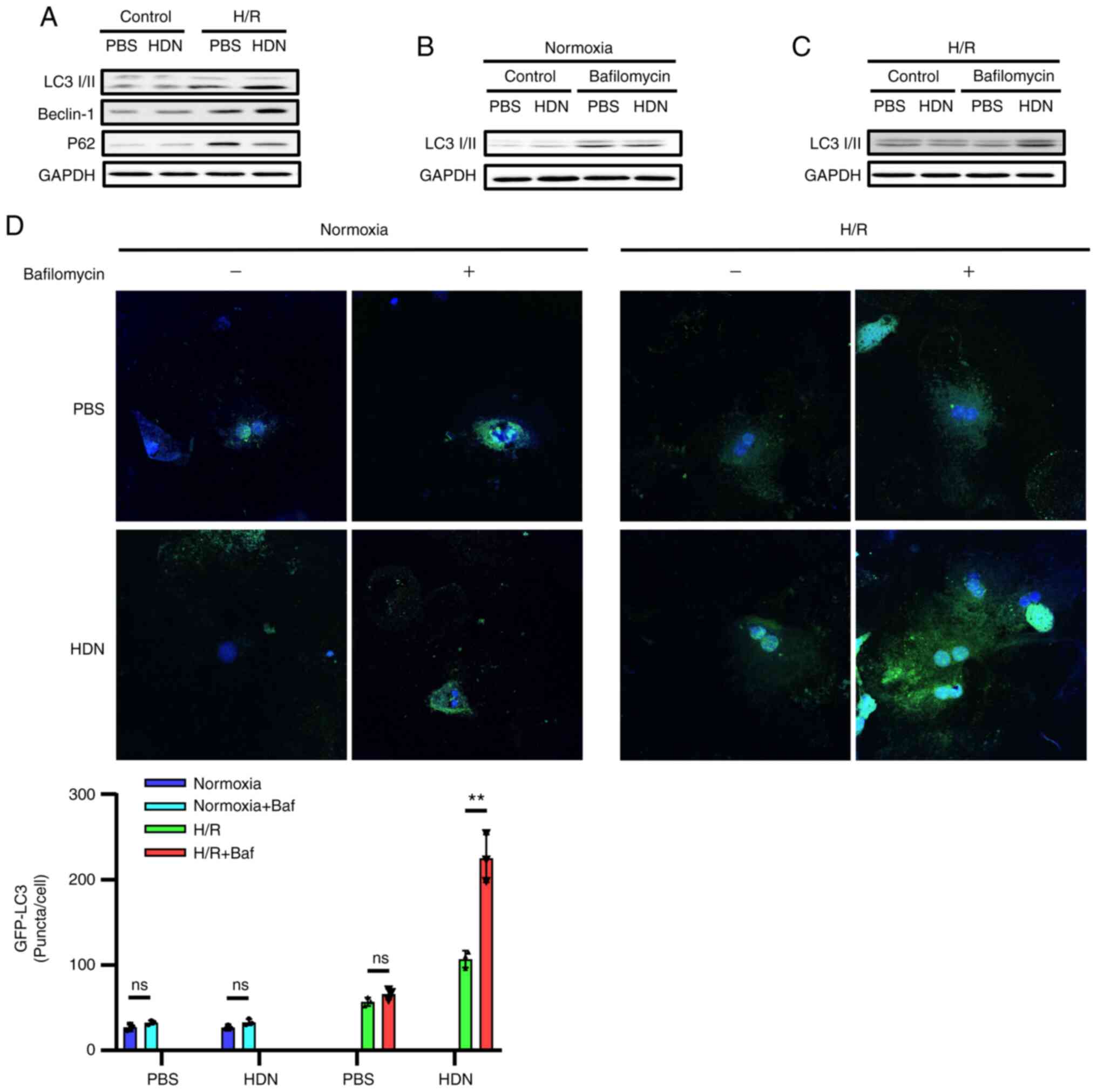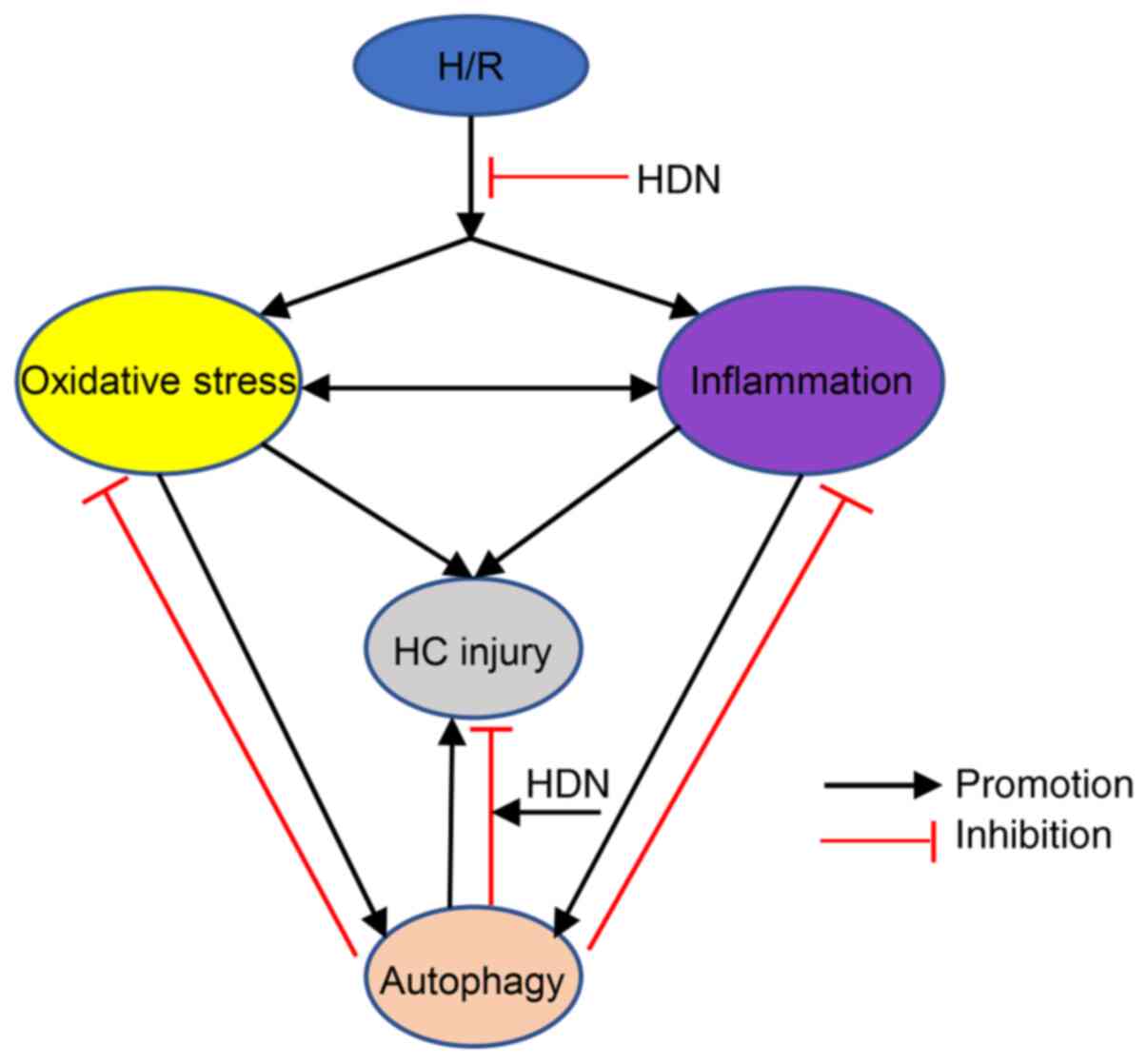|
1
|
Nastos C, Kalimeris K, Papoutsidakis N,
Tasoulis MK, Lykoudis PM, Theodoraki K, Nastou D, Smyrniotis V and
Arkadopoulos N: Global consequences of liver ischemia/reperfusion
injury. Oxid Med Cell Longev. 2014(906965)2014.PubMed/NCBI View Article : Google Scholar
|
|
2
|
Schemmer P, Lemasters JJ and Clavien PA:
Ischemia/Reperfusion injury in liver surgery and transplantation.
HPB Surg. 2012(453295)2012.PubMed/NCBI View Article : Google Scholar
|
|
3
|
Sinning C, Westermann D and Clemmensen P:
Oxidative stress in ischemia and reperfusion: Current concepts,
novel ideas and future perspectives. Biomark Med. 11:11031–11040.
2017.PubMed/NCBI View Article : Google Scholar
|
|
4
|
Halladin NL: Oxidative and inflammatory
biomarkers of ischemia and reperfusion injuries. Dan Med J.
62(B5054)2015.PubMed/NCBI
|
|
5
|
Tan S, Yokoyama Y, Wang Z, Zhou F, Nielsen
V, Murdoch AD, Adams C and Parks DA: Hypoxia-Reoxygenation is as
damaging as ischemia-reperfusion in the rat liver. Crit Care Med.
26:1089–1095. 1998.PubMed/NCBI View Article : Google Scholar
|
|
6
|
Portal L, Martin V, Assaly R, de Tassigny
A, Michineau S, Berdeaux A, Ghaleh B and Pons S: A model of
hypoxia-reoxygenation on isolated adult mouse cardiomyocytes:
Characterization, comparison with ischemia-reperfusion, and
application to the cardioprotective effect of regular treadmill
exercise. J Cardiovasc Pharmacol Ther. 18:367–375. 2013.PubMed/NCBI View Article : Google Scholar
|
|
7
|
Zou X, Liu Q, Guo S, Zhu J, Han J, Xia Z,
Du Y, Wei L and Shang J: A novel zebrafish larvae
hypoxia/reoxygenation model for assessing myocardial
ischemia/reperfusion injury. Zebrafish. 16:434–442. 2019.PubMed/NCBI View Article : Google Scholar
|
|
8
|
Jimenez-Castro MB, Cornide-Petronio ME,
Gracia-Sancho J and Peralta C: Inflammasome-Mediated inflammation
in liver ischemia-reperfusion injury. Cells. 8(1131)2019.PubMed/NCBI View Article : Google Scholar
|
|
9
|
Parhiz H, Roohbakhsh A, Soltani F, Rezaee
R and Iranshahi M: Antioxidant and anti-inflammatory properties of
the citrus flavonoids hesperidin and hesperetin: An updated review
of their molecular mechanisms and experimental models. Phytother
Res. 29:323–331. 2015.PubMed/NCBI View
Article : Google Scholar
|
|
10
|
Elhelaly AE, AlBasher G, Alfarraj S,
Almeer R, Bahbah EI, Fouda MMA, Bungau SG, Aleya L and Abdel-Daim
MM: Protective effects of hesperidin and diosmin against
acrylamide-induced liver, kidney, and brain oxidative damage in
rats. Environ Sci Pollut Res Int. 26:35151–35162. 2019.PubMed/NCBI View Article : Google Scholar
|
|
11
|
Pandey P, Sayyed U, Tiwari RK, Siddiqui
MH, Pathak N and Bajpai P: Hesperidin induces ROS-mediated
apoptosis along with cell cycle arrest at G2/M phase in human gall
bladder carcinoma. Nutr Cancer. 71:676–687. 2019.PubMed/NCBI View Article : Google Scholar
|
|
12
|
Mo'men YS, Hussein RM and Kandeil MA:
Involvement of PI3K/Akt pathway in the protective effect of
hesperidin against a chemically induced liver cancer in rats. J
Biochem Mol Toxicol. 33(e22305)2019.PubMed/NCBI View Article : Google Scholar
|
|
13
|
Park HK, Kang SW and Park MS: Hesperidin
ameliorates hepatic ischemia-reperfusion injury in sprague-dawley
rats. Transplant Proc. 51:2828–2832. 2019.PubMed/NCBI View Article : Google Scholar
|
|
14
|
Park WS, Park MS, Kang SW, Jin SA, Jeon Y,
Hwang J and Kim SK: Hesperidin shows protective effects on renal
function in ischemia-induced acute kidney injury (Sprague-Dawley
Rats). Transplant Proc. 51:2838–2841. 2019.PubMed/NCBI View Article : Google Scholar
|
|
15
|
Li X, Hu X, Wang J, Xu W, Yi C, Ma R and
Jiang H: Inhibition of autophagy via activation of PI3K/Akt/mTOR
pathway contributes to the protection of hesperidin against
myocardial ischemia/reperfusion injury. Int J Mol Med.
42:1917–1924. 2018.PubMed/NCBI View Article : Google Scholar
|
|
16
|
Meng X, Wei M, Wang D, Qu X, Zhang K,
Zhang N and Li X: The protective effect of hesperidin against renal
ischemia-reperfusion injury involves the TLR-4/NF-κB/iNOS pathway
in rats. Physiol Int. 107:82–91. 2020.PubMed/NCBI View Article : Google Scholar
|
|
17
|
Li S, Qin Q, Luo D, Pan W, Wei Y, Xu Y,
Zhu J and Shang L: Hesperidin ameliorates liver
ischemia/reperfusion injury via activation of the akt pathway. Mol
Med Rep. 22:4519–4530. 2020.PubMed/NCBI View Article : Google Scholar
|
|
18
|
He S, Wang X, Zhong Y, Tang L, Zhang Y,
Ling Y, Tan Z, Yang P and Chen A: Hesperetin post-treatment
prevents rat cardiomyocytes from hypoxia/reoxygenation injury in
vitro via activating PI3K/Akt signaling pathway. Biomed
Pharmacother. 91:1106–1112. 2017.PubMed/NCBI View Article : Google Scholar
|
|
19
|
Ebegboni VJ, Dickenson JM and
Sivasubramaniam SD: Antioxidative effects of flavonoids and their
metabolites against hypoxia/reoxygenation-induced oxidative stress
in a human first trimester trophoblast cell line. Food Chem.
272:117–125. 2019.PubMed/NCBI View Article : Google Scholar
|
|
20
|
Lei Z, Deng M, Yi Z, Sun Q, Shapiro RA, Xu
H, Li T, Loughran PA, Griepentrog JE, Huang H, et al: cGAS-mediated
autophagy protects the liver from ischemia-reperfusion injury
independently of STING. Am J Physiol Gastrointest Liver Physiol.
314:G655–G667. 2018.PubMed/NCBI View Article : Google Scholar
|
|
21
|
Sun Q, Loughran P, Shapiro R, Shrivastava
IH, Antoine DJ, Li T, Yan Z, Fan J, Billiar TR and Scott MJ:
Redox-Dependent regulation of hepatocyte absent in melanoma 2
inflammasome activation in sterile liver injury in mice.
Hepatology. 65:253–268. 2017.PubMed/NCBI View Article : Google Scholar
|
|
22
|
Livak KJ and Schmittgen TD: Analysis of
relative gene expression data using real-time quantitative PCR and
the 2(-Delta Delta C(T)) method. Methods. 25:402–408.
2001.PubMed/NCBI View Article : Google Scholar
|
|
23
|
Li S, Yi Z, Deng M, Scott MJ, Yang C, Li
W, Lei Z, Santerre NM, Loughran P and Billiar TR: TSLP protects
against liver I/R injury via activation of the PI3K/Akt pathway.
JCI Insight. 4(e129013)2019.PubMed/NCBI View Article : Google Scholar
|
|
24
|
Iranshahi M, Rezaee R, Parhiz H,
Roohbakhsh A and Soltani F: Protective effects of flavonoids
against microbes and toxins: The cases of hesperidin and
hesperetin. Life Sci. 137:125–132. 2015.PubMed/NCBI View Article : Google Scholar
|
|
25
|
Cernanec J, Guilak F, Weinberg JB,
Pisetsky DS and Fermor B: Influence of hypoxia and reoxygenation on
cytokine-induced production of proinflammatory mediators in
articular cartilage. Arthritis Rheum. 46:968–975. 2002.PubMed/NCBI View Article : Google Scholar
|
|
26
|
Cheng Y, Xiong J, Chen Q, Xia J, Zhang Y,
Yang X, Tao K, Zhang S and He S: Hypoxia/reoxygenation-induced
HMGB1 translocation and release promotes islet proinflammatory
cytokine production and early islet graft failure through TLRs
signaling. Biochim Biophys Acta Mol Basis Dis. 1863:354–364.
2017.PubMed/NCBI View Article : Google Scholar
|
|
27
|
Chenevier-Gobeaux C, Simonneau C,
Lemarechal H, Bonnefont-Rousselot D, Poiraudeau S, Rannou F,
Ekindjian OG, Anract P and Borderie D: Effect of
hypoxia/reoxygenation on the cytokine-induced production of nitric
oxide and superoxide anion in cultured osteoarthritic synoviocytes.
Osteoarthritis Cartilage. 21:874–881. 2013.PubMed/NCBI View Article : Google Scholar
|
|
28
|
Fernandez AR, Sánchez-Tarjuelo R, Cravedi
P, Ochando J and López-Hoyos M: Review: Ischemia reperfusion
injury-A translational perspective in organ transplantation. Int J
Mol Sci. 21(8549)2020.PubMed/NCBI View Article : Google Scholar
|
|
29
|
Arriel RA, Rodrigues JF, Souza HLR,
Meireles A, Leitao LFM, Crisafulli A and Marocolo M:
Ischemia-Reperfusion intervention: From enhancements in exercise
performance to accelerated performance recovery-a systematic review
and meta-analysis. Int J Environ Res Public Health.
17(8161)2020.PubMed/NCBI View Article : Google Scholar
|
|
30
|
Nieuwenhuijs-Moeke GJ, Pischke SE, Berger
SP, Sanders JSF, Pol RA, Struys M, Ploeg RJ and Leuvenink HGD:
Ischemia and reperfusion injury in kidney transplantation: Relevant
mechanisms in injury and repair. J Clin Med. 9(253)2020.PubMed/NCBI View Article : Google Scholar
|
|
31
|
Yi Z, Deng M, Scott MJ, Fu G, Loughran PA,
Lei Z, Li S, Sun P, Yang C, Li W, et al: Immune-Responsive gene
1/itaconate activates nuclear factor erythroid 2-related factor 2
in hepatocytes to protect against liver ischemia-reperfusion
injury. Hepatology. 72:1394–1411. 2020.PubMed/NCBI View Article : Google Scholar
|
|
32
|
Guan LY, Fu PY, Li PD, Li ZN, Liu HY, Xin
MG and Li W: Mechanisms of hepatic ischemia-reperfusion injury and
protective effects of nitric oxide. World J Gastrointest Surg.
6:122–128. 2014.PubMed/NCBI View Article : Google Scholar
|
|
33
|
Nita M and Grzybowski A: The role of the
reactive oxygen species and oxidative stress in the pathomechanism
of the age-related ocular diseases and other pathologies of the
anterior and posterior eye segments in adults. Oxid Med Cell
Longev. 2016(3164734)2016.PubMed/NCBI View Article : Google Scholar
|
|
34
|
He L, He T, Farrar S, Ji L, Liu T and Ma
X: Antioxidants maintain cellular redox homeostasis by elimination
of reactive oxygen species. Cell Physiol Biochem. 44:532–553.
2017.PubMed/NCBI View Article : Google Scholar
|
|
35
|
Chen X, Wei W, Li Y, Huang J and Ci X:
Hesperetin relieves cisplatin-induced acute kidney injury by
mitigating oxidative stress, inflammation and apoptosis. Chem Biol
Interact. 308:269–278. 2019.PubMed/NCBI View Article : Google Scholar
|
|
36
|
Turk E, Kandemir FM, Yildirim S, Caglayan
C, Kucukler S and Kuzu M: Protective effect of hesperidin on sodium
arsenite-induced nephrotoxicity and hepatotoxicity in rats. Biol
Trace Elem Res. 189:95–108. 2019.PubMed/NCBI View Article : Google Scholar
|
|
37
|
Xie L, Gu Z, Liu H, Jia B, Wang Y, Cao M,
Song R, Zhang Z and Bian Y: The anti-depressive effects of
hesperidin and the relative mechanisms based on the NLRP3
inflammatory signaling pathway. Front Pharmacol.
11(1251)2020.PubMed/NCBI View Article : Google Scholar
|
|
38
|
Heo SD, Kim J, Choi Y, Ekanayake P, Ahn M
and Shin T: Hesperidin improves motor disability in rat spinal cord
injury through anti-inflammatory and antioxidant mechanism via
Nrf-2/HO-1 pathway. Neurosci Lett. 715(134619)2020.PubMed/NCBI View Article : Google Scholar
|
|
39
|
Zhou B, Kreuzer J, Kumsta C, Wu L, Kamer
KJ, Cedillo L, Zhang Y, Li S, Kacergis MC, Webster CM, et al:
Mitochondrial permeability uncouples elevated autophagy and
lifespan extension. Cell. 177:299–314. 2019.PubMed/NCBI View Article : Google Scholar
|
|
40
|
Wang K: Autophagy and apoptosis in liver
injury. Cell Cycle. 14:1631–1642. 2015.PubMed/NCBI View Article : Google Scholar
|
|
41
|
Li J, Lin W and Zhuang L: CD5L-Induced
activation of autophagy is associated with hepatoprotection in
ischemic reperfusion injury via the CD36/ATG7 axis. Exp Ther Med.
19:2588–2596. 2020.PubMed/NCBI View Article : Google Scholar
|
|
42
|
Saiprasad G, Chitra P, Manikandan R and
Sudhandiran G: Hesperidin induces apoptosis and triggers autophagic
markers through inhibition of Aurora-A mediated
phosphoinositide-3-kinase/Akt/mammalian target of rapamycin and
glycogen synthase kinase-3 beta signalling cascades in experimental
colon carcinogenesis. Eur J Cancer. 50:2489–2507. 2014.PubMed/NCBI View Article : Google Scholar
|
|
43
|
Zhu B, Yang C, Wu J and Hua F: Autophagic
activation may be involved in the mechanism of hesperidin's
therapeutic effects on cognitive impairment. J Neurol Sci.
351:202–203. 2015.PubMed/NCBI View Article : Google Scholar
|
|
44
|
He J, Liu J, Huang Y, Tang X, Xiao H and
Hu Z: Oxidative stress, inflammation, and autophagy: Potential
targets of mesenchymal stem cells-based therapies in ischemic
stroke. Front Neurosci. 15(641157)2021.PubMed/NCBI View Article : Google Scholar
|















